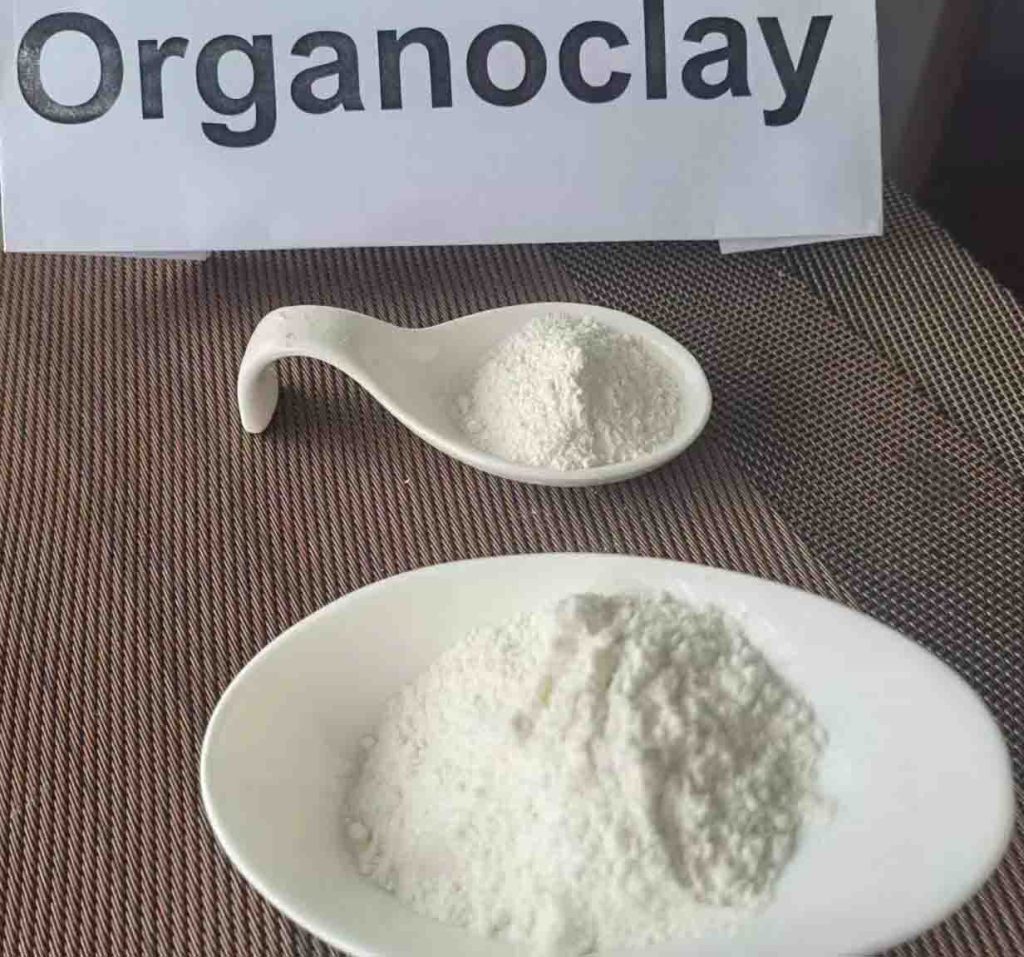Rheology Modification | Organobentonite
Rheology Modification : As an organic bentonite clay with easy dispersibility and Self activation ability, it is an ideal thixotropic agent. When used in paint, coating, ink, and lubricating grease, it is trusted and praised by a large number of users, and its rheological properties are significant.

Rheology Modification | Rheological additive
Pre Gel Grade Organoclay | Powder Coating Raw Materials
Easy Dispersing Grade Organoclay | Powder Coating Raw Materials
Super Dispersing Grade Organoclay | Powder Coating Raw Materials
Rheology Modification |Organic Clay
The organic bentonite produced by Camp Shinning is modified from bentonite.For example, calcium based bentonite is filled with a large amount of calcium ions during layer spacing.
When it comes into contact with water, a hydration process occurs.At this point, the distance between layer will become even larger.Usually at this time, we add the sodium based modifier and the calcium ions replace it.
This step is mainly aimed at achieving a goal of expanding the distance between layer. Therefore, the suspension of montmorillonite can be fully suspended after the modification.
The biggest difference between organic bentonite and ordinary bentonite is that it has a long carbon chain inserted in the middle of its structure.Turns its surface from hydrophilicity to lipophilic.
So the existence of this normal chain greatly enhances its lipophilicity.When we disperse it in the solvent oil. We can use the principle of similar solubility,Infiltrate between the layers of montmorillonite.
When cutting at high speeds, the high-speed separation between his scams has played a better dispersing role.
If some improvised traditional Chinese painting styles are added at this time, it will allow for better expansion between layers and a strong dispersion effect.
The emergence of this dispersion effect allows many of its performance to be reflected in detail.
Usually, we use our organic bentonite and xylene to form a colloid.His solid content is about 10%.
So for the finished organic bentonite, we will test its quality standards through several aspects.
Based on our years of experience, we can test whether our organic bentonite indicators are strictly produced according to standards from a total of 5 aspects.
1, Moisture content.105℃.
2, Pass rate.(75 um %)
3,Apparent viscosity. / mps.s
4, Colloid rate.
5,Quartz content.(This indicator has special requirements in North America.So many North American customers are particularly concerned about this indicator.)
Here we also provide a standard for the detection indicators of easily dispersed organic bentonite.For manufacturers with extensive experience in producing organic bentonite, these indicators are crucial.
1,Shear dilution index
2,Particle size of dispersion(D50),um
3,Dispersion performance(15min,Less than 36um)– The meaning of this indicator is that it can disperse it to 36 seconds within 15 minutes.
Due to the fact that the above three indicators are detection standards for easily dispersed organic bentonite, the biggest characteristic of this type of organic bentonite is that its dispersion performance is many times stronger than that of ordinary organic bentonite.
So what specific testing instruments do we usually use to test our organic bentonite?
Here are some commonly used testing equipment for organic bentonite production.
1,Stir the dispersion machine.
2,Rotating viscometer.
3,Rheometer.
4,Centrifuge.
5,Including equipment for measuring heavy metal content.
6,Laser particle size equipment.
